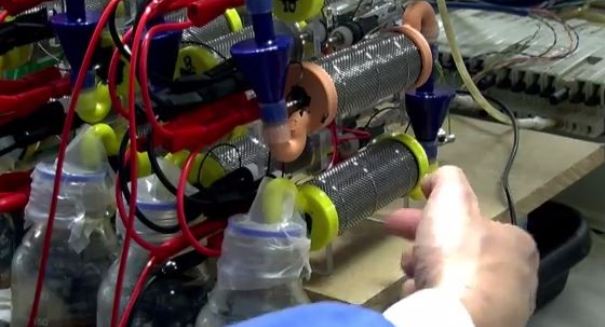
EcoBot is a robot that can operate on its own by gathering waste and turning it into electricity.
According to a news release from the Institute of Physics, researchers have invented a pee-powered robot.
An artificial device could be utilized to bring pee to future versions of EcoBot — a robot that can operate on its own by gathering waste and turning it into electricity.
Over the past decade, researchers from the University of the West of England and the University of Bristol have developed four versions of Ecobots, each of which is run by electricity-producing microbial fuel cells that use live microorganisms to consume waste organic matter and produce low-level power.
The researchers hope to use the Ecobots to check on areas where harmful levels of pollution or other dangers exist. These types of robots can also produce their power from rotten fruit and vegetables, as well as sludge and dead flies.
“We speculate that in the future, urine-powered EcoBots could perform environmental monitoring tasks such as measuring temperature, humidity and air quality,” said lead author Peter Walters, from the University of the West of England’s Centre for Fine Print Research, in a statement. “A number of EcoBots could also function as a mobile, distributed sensor network.”
“In the city environment, they could re-charge using urine from urinals in public lavatories. In rural environments, liquid waste effluent could be collected from farms,” Walters added.
Currently, conventional motor pumps are utilized to send liquid fuel to the EcoBot’s fuel cells; however, they are subject to mechanical issues. The new device behaves in a similar way to the human heart by compressing the body of the pump and sending the liquid out. This was accomplished utilizing “artificial muscles” constructed from shape memory alloys — a collection of smart materials that have the ability to “remember” their former shape.
When heated with an electric current, the artificial muscles compressed a soft region in the center of the heart-pump resulting in the ejection of the fluid through an outlet and pumped to a height that would be adequate enough to send fluid to an EcoBot’s fuel cells. The artificial muscles then cooled and “remembered” their former shape when the electric current was taken away, forcing the heart-pump to relax and inciting fluid from a tank to be pulled in for the next cycle.
According to the researchers, a stack of 24 microbial fuel cells fueled by urine were able to produce enough electricity to charge a capacitor.
“The artificial heartbeat is mechanically simpler than a conventional electric motor-driven pump by virtue of the fact that it employs artificial muscle fibers to create the pumping action, rather than an electric motor, which is by comparison a more complex mechanical assembly,” Walters posited.
The study’s findings are described in greater detail in the journal Bioinspiration and Biomimetics.

What do you think of the device? Start a conversation by sounding off in the comments section.
Leave a Reply